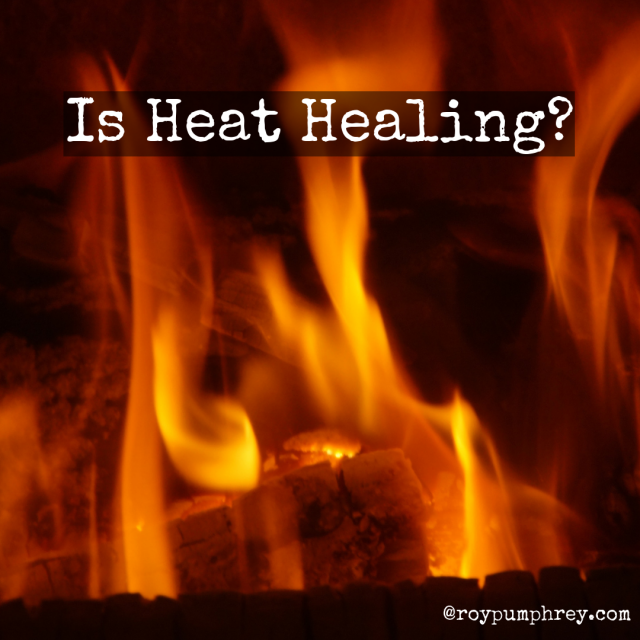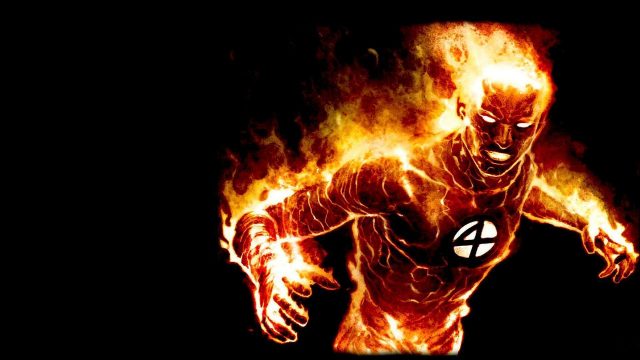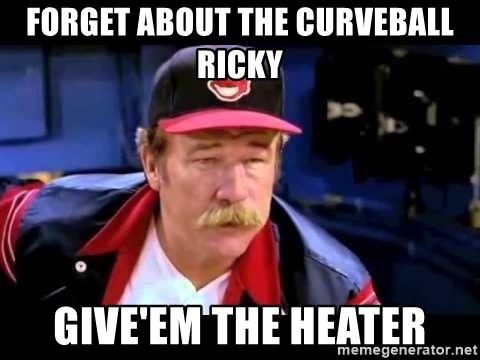Last time we went over Is Ice Nice?
Is R.I.C.E really the best practice in all circumstances?
Or, should we, respect basic physiology, use our noggins, and do something other than just slap a bag of ice on every injury?

FIIIIIRREEEEE!!!!!
Heat, fire, literally helped make us human.
“a surge in human brain size that occurred roughly 1.8 million years ago can be directly linked to the innovation of cooking.
Homo erectus, considered the first modern human species, learned to cook and doubled its brain size over the course of 600,000 years. Similar size primates—gorillas, chimpanzees, and other great apes, all of which subsisted on a diet of raw foods—did not.
Heating our food unlocked nutrition: 100 percent of a cooked meal is metabolized by the body, whereas raw foods yield just 30 or 40 percent of their nutrients.
Applying fire to food also softens tough fibers, releases flavors, and speeds up the process of chewing and digesting. The extra nutrition, and the improved eating experience, allowed our prehistoric ancestors to spend less time searching for food—and less time chewing through tough plants for meager caloric reward.
Cooking, therefore, gave us both the nutrition we needed to develop large brains and the time we needed to use them for things more interesting than chewing.” –Nat Geo
That’s really off topic.
It’s just a cool thing to think about.
Thermotherapy
The scientific term for applying heat either locally (heating pad, warm water bottle) or globally (warm bath) is “thermotherapy”.
“Therapeutic heating — “thermotherapy” for therapy geeks, the opposite of its trendier cousin, cryotherapy — is more useful than most people realize, mainly because muscle is a source of more and worse pain than most people realize, and muscle pain seems to respond well to heat. Muscle pain caused by over-exertion, muscle cramps and spams, and especially trigger points (muscle “knots”) are all common and sometimes severe, but often mistaken for other kinds of problems.
This therapeutic staple has mostly been ignored by science: its benefits are far from proven, and obviously it’s no miracle cure.1 Nevertheless, it’s probably doing more than “just” relieving symptoms. (Not that we should knock symptom relief.2) Everyone should understand heating the same way everyone knows how to put on a bandaid: it is a cheap, drugless way of taking the edge off an amazing array of common painful problems, especially neck and back pain, and maybe more.” – Pain Science
So heat therapy, while no miracle (only the Pope, Dr. Oz and those infomercial “celebrity” fitness trainers are handing out miracles these days) seems to be rather beneficial for MUSCULAR/ soft tissue injuries.
What Exactly Does Heat Do?
Increased Blood Flow, Transfer of Cellular Stuff, Recovery:
For starters, applying heat to an area increases blood flow and (generally speaking) increased blood flow is increased healing.
As we saw last time, the body is pretty good at regulating its self, but in the presence of real tissue deformation (tears) it can go all nuclear option on us, creating too much inflammation, actually delaying the healing response. So increased blood flow isn’t always the best thing…but for most of your injuries, it probably is.
“Unlike cryotherapy, thermotherapy increases tissue temperature, blood flow, metabolism, and connective tissue extensibility……Increased blood flow facilitates tissue healing by supplying protein, nutrients, and oxygen at the site of injury. A 1ºC increase in tissue temperature is associated with a 10% to 15% increase in local tissue metabolism (12). This increase in metabolism aids the healing process by increasing both catabolic and anabolic reactions needed to degrade and remove metabolic by-products of tissue damage and provides the milieu for tissue repair. “- The Physiologic Basis and Clinical Applications of Cryotherapy and Thermotherapy for the Pain Practitioner
I don’t think it takes much convincing to see that if we can bring in the good and push out the bad, the tissue is going to heal faster.
Remember, your muscles are damaged from exercise much like they are with a small tear, strain or sprain.
This is especially true with eccentric exercise, which has been shown to induce more muscle damage than other muscle contractions.
“topical cooling, a commonly used clinical intervention, seems to not improve but rather delay recovery from eccentric exercise–induced muscle damage.” – A whole slew of smarties
Ice/ cold application after any form of exercise has been shown time and again to delay the recovery process.
While heat has been shown to improve muscle recovery rates.
“recovery from exhaustive endurance exercise is accelerated by raising and slowed by lowering muscle temperature.” – Its a lot of names, just click the link
Increased Flexibility, Decreased Stiffness:
With thermotherapy we also see an increase in “flexibility” through decreased muscle tonicity (tone, neurological muscle “tightness”) and connective tissue extensibility. <—-the magic of hot yoga..
“there was clearer evidence that heat increases ROM. This seems to provide a therapeutic window that ameliorates the effects of stretching interventions on ROM, and there was clear evidence that combined heat and stretching is more effective than stretching alone. These findings seem to support the use of heat as an adjunct to developmental and therapeutic stretching techniques.” – Bleakley and Costello
And Why Would We Want to Move an Injured Site as Soon As Possible?
Besides exercise being the very basis of modern physical therapy, you know, injury rehabilitation?
Movement is how the tissues are stressed, damaged and subsequently rebuilt.
“the duration of reduced activity (immobilization) ought to be limited only until the scar reaches sufficient strength to bear the muscle-contraction induced pulling forces without re-rupture. At this point, gradual mobilization should be started followed by a progressively intensified exercise program to optimize the healing by restoring the strength of the injured muscle, preventing the muscle atrophy, the loss of strength and the extensibility, all of which can follow prolonged immobilization. Based on the current knowledge, the rehabilitation program should consist of progressive agility and trunk stabilization exercises as well as exercised tailored to lengthen (eccentric exercises) the injured skeletal muscle.” –Regeneration of injured skeletal muscle after the injury
Once the injured site is stable, ie the tissue is no longer in the GAS Alarm Phase (Phase 1), movement is paramount in the recovery of the functional status of those tissues.
But it Hurts too Much to Move
Heat helps with pain too.
Heat therapy has consistently been shown to reduce pain, DOMS (delayed onset muscle soreness), if applied immediately after exercise, and to improve low back pain during the application,
“when hot water bottle (especially in case of providing deep heat) was used, the patient’s focus was distracted from his/her pain, the muscles relaxed, and hence the pain relieved. The studies on the effect of thermotherapy illustrate that continued thermotherapy leads to alleviating pain in the patients with acute low back pain” – Dehgahan and Farahbod
“Low-level continuous heat wraps left for 8 hours just after heavy exercise reduced DOMS….heat applied just after exercise seems very effective in reducing soreness.” – Petrofsky and super friends
“Thermotherapy is recommended for reducing pain and increasing function in patients with acute low back pain and in patients with DOMS” – Malanga
But that relief is typically short-lived as the tissue temperatures return to normal and all the other acute physiological processes that heat treatment induces reverse.
We’ve all felt the heat-treated tissues feel good immediately after heat treatment, then gradually tighten up and pain return as the tissues cool.
*Its pretty complicated as to why heat therapy helps with pain relief, so I’ll leave it up to you if you’re so inclined.
Flame ON!

Turning yourself into a giant human fireball is an awesome super power. The tagline, “Flame on”, not so much. Image thieved from wallpapercave
When Do We Heat?
When there is no discernable tissue damage.
If the injury site is excessively swollen or bruised?
Keep the heat away.
You’ve already got rampant inflammation and heat will only open the gates of Mordor and allow it to really run amok.
“Heat will make some conditions much worse. Never apply heat to an infection or fresh injury! Or any other acute inflammation, like a flare-up of arthritis. Just don’t do it! That’s what ice is for: soothing inflamed tissue.
And what’s a “fresh” injury? Any time tissue has been physically damaged, it will be inflamed for a few days, give or take. If superficial tissue is sensitive to touch, if the skin is hot and red, if there is swelling, these are all signs that your injury is still fresh, and should not be heated.“- Pain Science
For virtually everything else,
- Tightness
- Soreness
- Slight muscle strains
- Slight joint sprains
- Muscle pain
Heat is probably going to be the better option.
If you’re honest, you’ll probably come to the conclusion, that the VAST MAJORITY of your “injuries” fall into this category (as in, they really are not injuries, at least not yet) just low level soft tissue damage and heat would actually be the more beneficial than cryotherapy in their treatment.
How To Heat?
 #1 Over the Long Haul
#1 Over the Long Haul
I think the evidence, and my personal experience, is pretty clear.
The benefits of heat are most evident DURING the treatment.
Sufficed to say, that’s usually a pretty short lasting treatment. <—-which is why I LOVE, and highly recommend the thermacare stick ons.
BUT, if heat therapy increases blood flow and cellular metabolism (and repair), then long-term heat application, should have an exponential effect.
Think about this along the lines of compound interest.
One hour doesn’t do much, but what if you slept for 8 hours with heat on the injured area?
Personally, it works for me…
My #1 go to rehab modality for 90% of the ouchies I get is to sleep, the whole night, with heat on the area.
No, it’s not magic.
A heating pad isn’t going to cure what ails ya.
But when I jack my back up or neck, sleeping on a heating pad the whole night, significantly accelerates my healing.
Yes, I’m also doing other things like sleeping in a non-provoking position and trying to decompress the spinal tissues, but the long-term heat application seems to have a very profound effect on my pain-free range of motion the next day as well as length of time until complete pain resolution.
#2 In Conjunction With Gentile, Non-Provoking, Movement
“It hurts when I do this”
Then don’t do that.
“Part of the stabilization approach is to correct the aberrant patterns to metaphorically stop picking the scab. As a result, the tissues become less sensitized, the repertoire of pain-free tasks increases and motion returns. This is why it is essential to perform therapeutic exercise pain-free.” – Low Back Disorders
Stop “picking the scab” and doing pain provoking movements is the first step in rehabilitating any tissue.
Remember, heating the injured area decreases tissue stiffness and increases extensibility along with a decrease in pain?
So I think it stands to reason that, unless there is active structural damage (a fresh tear where the tissues are still unstable), heating the area would increase the pain-free ROM, repertoire of motion, and therefore help facilitate pain-free therapeutic exercise.
At least while the tissues are warm.
As the tissues cool and the pain-free range of motion decreases STOP, reapply heat and start the process over. <—-yes, during the initial stages of treatment this may mean using a very small range of motion and very few repetitions before pain returns.
In my experience when I use cycles of heat, pain-free movement, heat, my pain-free range of motion increases much faster and is more “stable” than if I do nothing, only movement or only heat.
*By “stable” I mean that I can reliably reproduce the same or greater range of motion in a movement from one cycle of heat and exercise to the next.
Such A Trendsetter I Am
I started recommending heat for low-level injuries long ago.
Before, ICED came out and it was trendy.
Was I so Smart?
Nope, I just knew heat felt better and allowed me to move pain-free sooner.
I always felt like heat application INCREASED my functional, pain-free range of motion with muscle pulls.
Where as ice, while it did help keep swelling in check more than once with contusions and joint sprains, always seemed to leave me stiff and DECREASE my functional range of motion with no pain attenuation when it came to muscle pulls.
It just made sense that increased heat was increased bloodflow and increased bloodflow is accelerated healing.
“Based on currently available evidence and our clinical experience, we recommend cold therapy in the setting of acute injury with inflammation and heat for muscular pain and soreness as well as for joint pain and stiffness.” – Mechanisms and efficacy of heat and cold therapies for musculoskeletal injury


